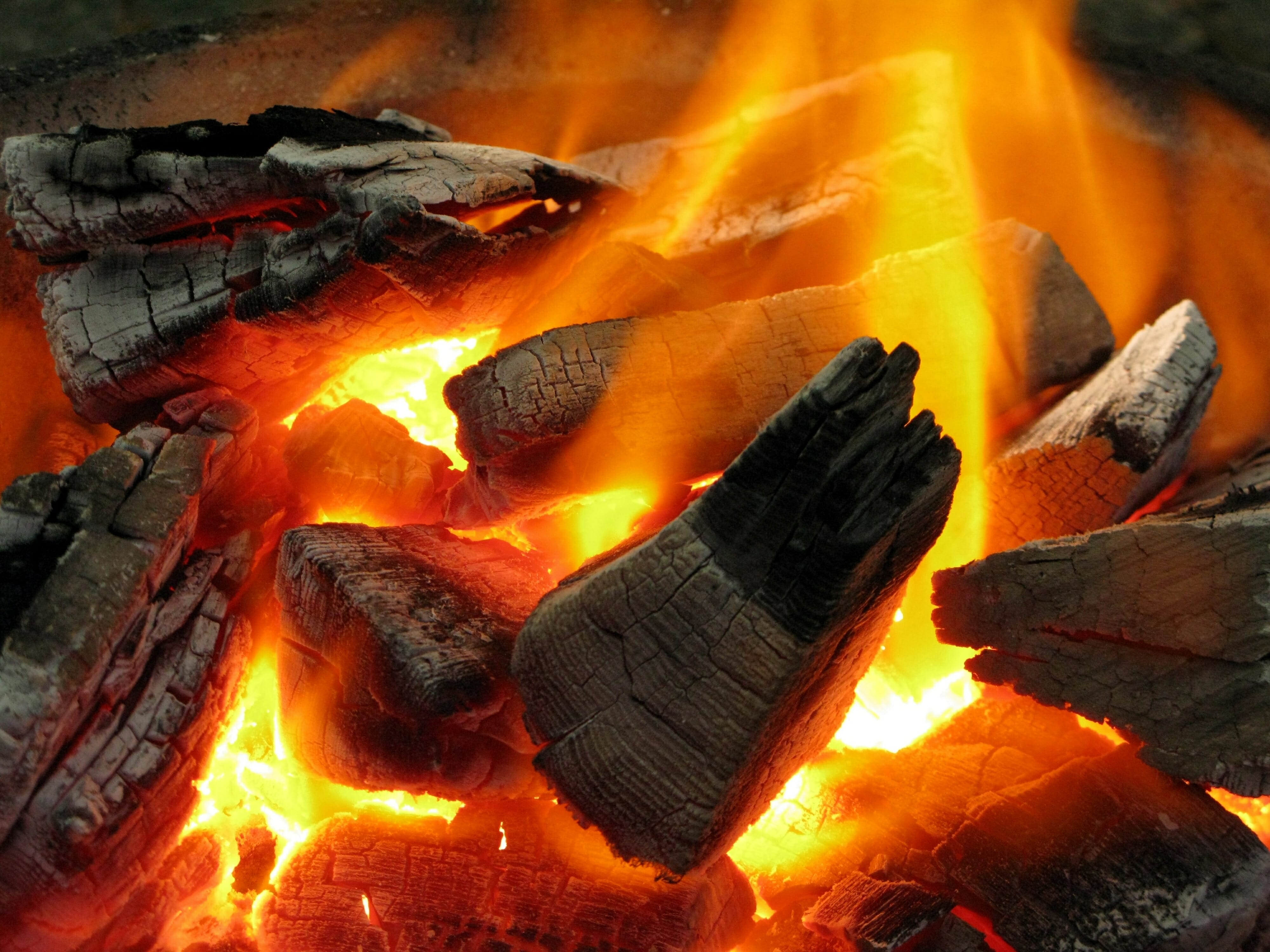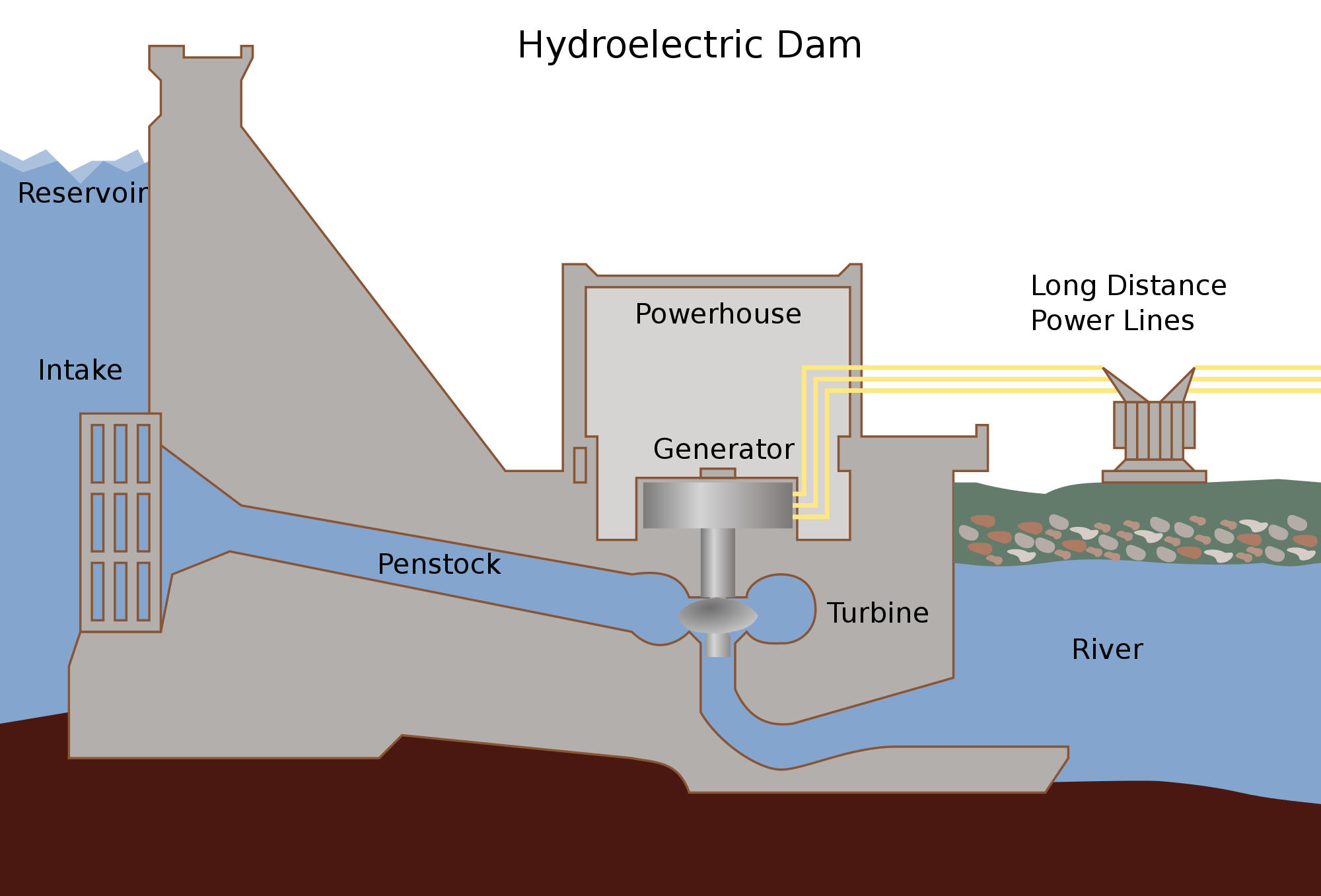Conventional Sources of Energy Include:
1.Thermal Energy
2.Hydro power
3.Bio-gas
4.Wind Energy
Thermal energy
What is Thermal Energy ?
Thermal energy is the energy that comes from heat. This heat is generated by the movement of tiny particles within an object. The faster these particles move, the more heat is generated.
Thermal Power Plant
A power plant in which the heat is required to make steam to drive turbines is obtained by burning fuels is called thermal power plant. Large amounts of fossil fuels are burnt every day in power stations to heat up water to produce steam which further runs the turbine to generate electricity. The term thermal power plant is used since fuel is burnt to produce heat energy which is converted into electrical energy.
Thermal Energy and Conservation
• THERMAL ENERGY can be easily conserved if we start conserving fossil fuels.
• As thermal energy is a type of energy involves heat. To conserve thermal energy burning of fossil fuels should be put to a stop.
• Non-renewable fossil fuels account for 85 percent of energy production in the U.S., according to the U.S. Department of Energy. Fossil fuel energy affects the environment and health due to the emissions and impact of mining practices. Reducing fossil fuel usage helps protect the limited supply of fossil fuels while decreasing the pollution produced. Fossil fuel conservation saves you money in many situations.
Hydro power
What is Hydro Power?
· Hydro-power is the power derived from the energy of falling water or fast running water, which may be harnessed for useful purposes. Hydro-power is a traditional source of energy of falling water into electricity. Since there are very few waterfalls, which could be used as a source of potential energy, hydro-power is associated with dams. Thus in short Hydro energy is used for converting potential energy to kinetic energy to electrical energy.
Working of a Hydro Power Plant
Advantages of Hydro Power
· Hydro-power is fueled by water, so it's a clean fuel source, meaning it won't pollute the air like power plants that burn fossil fuels, such as coal or natural gas. Hydroelectric power is a domestic source of energy, allowing each state to produce their own energy without being reliant on international fuel sources. This is how it helps in conservation.
Bio-gas
What is Bio-gas?
Bio-gas typically refers to a mixture of different gases produced by the breakdown of organic matter in the absence of oxygen. Biogas can be produced from raw materials such as agricultural waste, manure, municipal waste, plant material, sewage, green waste or food waste. It is a renewable energy source and in many cases exerts a very small carbon footprint. Biogas comprises primarily methane (CH4) and carbon dioxide (CO2) and may have small amounts of hydrogen sulphide (H2S).
Bio-gas is produced from various biomass sources through a biochemical process, such as anaerobic digestion, or through thermo-chemical means, such as gasification. With minor clean up, bio-gas can be used to generate electricity and heat. To fuel vehicles, bio-gas must be processed to a higher purity standard.
Bio-gas can be compressed, much like natural gas, and used to power motor vehicles. In the UK, for example, bio-gas is estimated to have the potential to replace around 17% of vehicle fuel.
Bio-gas is a renewable fuel so it qualifies for renewable energy subsidies in some parts of the world. Bio-gas can also be cleaned and upgraded to natural gas standards when it becomes bio methane.
Advantages of Bio-gas in Conservation
1. No Harmful Emissions: Biomass energy, creates no harmful carbon dioxide emissions. Many energy sources used today struggle to control their carbon dioxide emissions, as these can cause harm to the ozone layer and increase the effects of greenhouse gases, potentially warming the planet. It is completely natural, has no such carbon dioxide side effects in its use.
2. Clean Energy: Because of its relatively clean use, biomass energy, when used in commercial businesses such as airlines, receives tax credit from the US government. This is good for the environment and good for business. It does release carbon dioxide but captures carbon dioxide for its own growth. Carbon dioxide released by fossil fuel is released into the atmosphere and are harmful.
3. Abundant and Renewable: Biomass products are abundant and renewable. Since they come from living sources, and life is cyclical, these products potentially never run out, so long as there is something living on earth and there is someone there to turn that living things components and waste products into energy.
4. Reduce Dependency on Fossil Fuels: It has developed as an alternate source of fuel for many homeowners and have helped them to reduce their dependency on fossil fuels.
5. Reduce Landfills: Another benefit of this energy is that it can take waste that is harmful to the environment and turn it into something useful. For instance, garbage as landfill can, at least partially, be burned to create useable biomass energy.
6. Can be used to Create Different Products: Biomass energy is also versatile, as different forms of organic matter can be used to create different products. Ethanol and similar fuels can be made from corn and other crops. With so many living things on the planet, there is no limit to how many ways it can be found and used.
Wind Energy
What is Wind Energy?
Wind power is extracted from air flow using wind turbines or sails to produce mechanical or electrical power. Windmills are used for their mechanical power, wind pumps for water pumping, and sails to propel ships. Wind power as an alternative to fossil fuels, is plentiful, renewable, widely distributed, clean, produces no greenhouse gas emissions during operation, and uses little land.
Wind Energy and Conservation
One of the benefits of wind is that it’s a renewable form of energy, meaning it can be used over and over again.
Generators
One way to conserve wind energy is by using a generator system that’s powered by wind turbines, according to Wind Job. A wind turbine is made up of a rotor, a series of blades and a shaft. As the wind blows against the blades, the rotor turns the shaft. When the shaft is connected to a generator, wind energy is converted into mechanical energy, which causes the generator to spin. As the generator spins, electrical power or energy is created.
Generator equipment is also capable of storing electrical power for later use, much like a battery cell stores energy. Open areas free of buildings and trees create the best conditions for a wind generator to work. Turbine systems vary in the amount of power they can generate. Turbine capacity is determined by the number and size of the rotor blades, as larger blades and a greater number of blades can generate more power.
The use of solar panel systems alongside wind generators is another means of conserving wind energy. Solar panel systems convert sunlight into useable forms using photo-voltaic, or solar cell, technology. Solar cells contain a material that’s capable of generating an electric current when exposed to sunlight. This current can then be used to power devices like a pump, a heating system or an electrical grid.
Solar and wind generator systems can be used interchangeably in cases where sunlight exposure may be limited. A solar wind system is no doubt more complicated to set up than a wind generator alone; however, the use of both energy sources can provide a more steady source of power.



You might be eligible for a new government solar energy rebate program.
ReplyDeleteClick here and find out if you are qualified now!